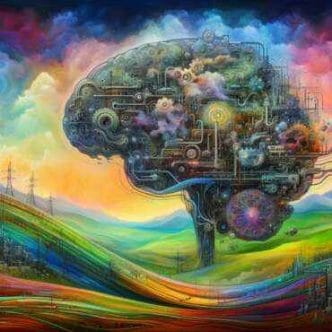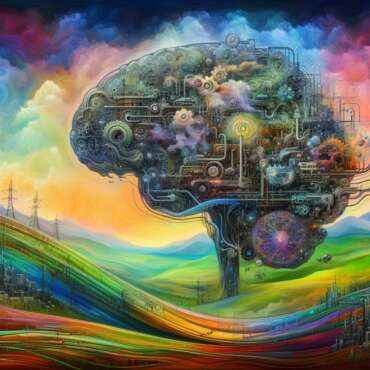Earthquakes can be devastating. However, scientists are yet to develop reliable methods to predict when quakes will occur, which area they will impact, or how big (magnitude) they will be, despite multiple attempts to do so over the last few decades. That said, scientists have begun using machine-learning techniques for quake forecasting, mostly for the aftershocks of smaller ones since big earthquakes are rare.
The latest such attempt is by researchers at the University of Texas (UT) at Austin who say they have developed an artificial intelligence (AI) algorithm that correctly predicted 70% of earthquakes, a week before they happened during a seven-month trial in China, raising hopes that the technology could one day be used to limit the impact of earthquakes on lives and economies. The trial was part of an international competition held in China in which the UT-developed AI came first out of 600 other designs. UT’s entry was led by bureau seismologist and the AI’s lead developer, Yangkang Chen. Findings from the trial are published in the journal Bulletin of the Seismological Society of America.
Researchers at the University of Texas at Austin have developed an AI algorithm that correctly predicted 70% of earthquakes during a seven-month trial.
The AI was trained to detect statistical bumps in real-time seismic data that researchers had paired with previous earthquakes. The outcome was a weekly forecast in which the AI successfully predicted 14 earthquakes within about 200 miles of where it estimated they would happen, and at almost exactly the calculated strength. It missed one earthquake and gave eight false warnings. The researchers acknowledge, though, that they’re unsure if the same approach will work at other locations.

Damage after a powerful earthquake in New Zealand in 2011. Researchers at UT Austin are working to forecast earthquakes with AI. Image by Flickr/Martin Fluff
“Predicting earthquakes is the holy grail,” said Sergey Fomel, a professor in UT’s Bureau of Economic Geology and a member of the research team. “We’re not yet close to making predictions for anywhere in the world, but what we achieved tells us that what we thought was an impossible problem is solvable in principle.”
“You don’t see earthquakes coming,” said Alexandros Savvaidis, a senior research scientist who leads the bureau’s Texas Seismological Network Program (TexNet) — the state’s seismic network. “It’s a matter of milliseconds, and the only thing you can control is how prepared you are. Even with 70%, that’s a huge result and could help minimize economic and human losses and has the potential to dramatically improve earthquake preparedness worldwide.”
According to the researchers, their method had succeeded by following a relatively simple machine learning approach. The AI was given a set of statistical features based on the team’s knowledge of earthquake physics, then told to train itself on a five-year database of seismic recordings. Once trained, the AI gave its forecast by listening for signs of incoming earthquakes among the background rumblings in the Earth.
The researchers are confident that in places with robust seismic tracking networks such as California, Italy, Japan, Greece, Turkey and Texas, the AI could improve its success rate and narrow its predictions to within a few tens of miles. It will soon test the AI in Texas since the state experiences a high rate of minor- and some moderate-magnitude earthquakes. The bureau’s TexNet hosts 300 seismic stations and more than six years of continuous records.
Eventually, the researchers want to integrate the system with physics-based models, which could be important where data is poor, or places such as Cascadia, where the last major earthquake happened hundreds of years before seismographs. “Our future goal is to combine both physics and data-driven methods to give us something generalized, like ChatGPT, that we can apply to anywhere in the world,” Chen said. The new research is an important step to achieving that goal. “That may be a long way off, but many advances such as this one, taken together, are what moves science forward,” Tinker said.
Similar Attempts by Scientists Across the World
In October 2022, for instance, the National Center for High-Performance Computing (NCHC) and Academia Sinica said they developed an AI model that could help researchers predict earthquakes one day in advance. The model could predict earthquakes based on precursors to tectonic activity, said the researchers who were led by Academia Sinica researcher Lee Lou-chuang and NCHC associate researcher Tsai Tsung-che.
The AI model was developed using total electron content (TEC) data and the Taiwania 2 supercomputer. The model could predict a magnitude 6 or higher earthquake one day in advance by analyzing data from the previous 30 days, they said. The team’s findings were published by the journal Earth and Space Science. This February, researchers at Ariel University in the West Bank said they had made progress in the field of earthquake prediction by using AI to study the levels of electrons in the ionosphere, and find potential precursors to an earthquake.
The ionosphere stretches roughly 50 to 400 miles above Earth’s surface, right at the edge of space. It forms the boundary between Earth’s lower atmosphere — where we live and breathe — and the vacuum of space. The ionosphere has been shown to react to major Earth and space events, such as thunderstorms and solar flares. With earthquakes, changes are observed in the ionosphere ahead of seismic activity as the density and flow of electrons in the ionosphere changes due to the shifts in the Earth’s tectonic plates. But there are also more unpredictable changes, caused by factors both from Earth below and space above, that make it hard to know exactly what the ionosphere will be like at a given time.
A Laboratory project called QuakeCast uses machine learning to monitor the Earth’s ionosphere for electron activity that may precede an earthquake. QuakeCast’s machine learning model is trained to monitor for the specific changes in the ionosphere that occur before an earthquake. Stanford University, too, has developed a deep learning algorithm called ConvNetQuake. Deep learning is a machine learning technique. This algorithm was trained on a dataset of over 400,000 seismic events. In trials, it was able to detect earthquakes with a 99% true positive rate since it can distinguish between earthquake signals and background noise.
Meanwhile, researchers at the University of Tokyo also have developed a neural network model that can simulate the behavior of fault systems that are responsible for the majority of earthquakes. With data inputs of a fault system, the model can predict how it will evolve over time, an approach that has shown promise in predicting the behavior of the complex fault system responsible for the 2011 Tohoku earthquake in Japan.
AI is also being used to improve earthquake preparedness and disaster management. Google, for instance, has developed an AI-based early warning system called ShakeAlert, which uses data from seismometers to rapidly detect the initial signs of an earthquake. The system can then send alerts to people in the affected area, giving them valuable seconds to take cover or evacuate before the shaking begins.
In August 2020, Google collaborated with the United States Geological Survey (USGS) and California Governor’s Office of Emergency Services (Cal OES) to send earthquake alerts, powered by ShakeAlert, directly to Android devices in California. The ShakeAlert system uses signals from more than 700 seismometers installed across the state by USGS, Cal OES, University of California Berkeley, and the California Institute of Technology.
In India Too
On September 27, Google introduced the Android Earthquake Alerts System in India too. The system uses sensors in Android smartphones to detect and estimate earthquakes.It did so in consultation with the National Disaster Management Authority (NDMA) and the National Seismology Center (NSC), providing Android users automatic early warning alerts when there is an earthquake in their area.

Image by Google
Each Android smartphone is equipped with tiny accelerometers that can act as mini seismometers. When a phone is plugged in and charging, it can detect the very beginnings of earthquake shaking. If many phones detect earthquake-like shaking around the same time, Google’s server can use this information to estimate that an earthquake may be happening, as well as characteristics of the event such as its epicenter and magnitude. The server, in turn, can send alerts to nearby phones.
Internet signals travel at the speed of light, much faster than the propagation of earthquake shaking through the ground, so the alerts often reach phones several seconds before severe shaking does. Google alerts are available in Indian languages supported by Android but to receive the alerts, users must have Wi-Fi and/or cellular data connectivity, and both Android Earthquake Alerts and location settings enabled. Users who do not wish to receive these alerts can turn off Earthquake Alerts in device settings.
____________
Written By: Techquity India















